Packaging Lines Get Smart
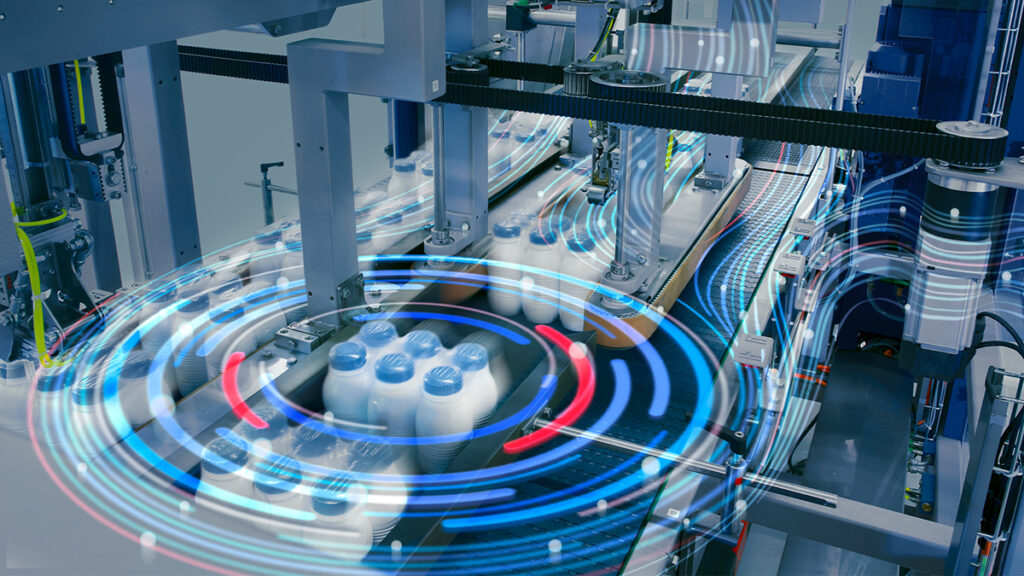
More sophisticated automation controls, robotics, mechatronics and material transport systems can boost packaging line productivity. Image courtesy of Bosch Rexroth.
Choose the Right Technology to Boost Cpg Productivity and Control Costs in the Factory of the Future
By Sean Spees, Market Segment Manager for Consumer Packaged Goods at Bosch Rexroth Corporation
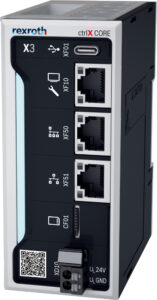
Bosch Rexroth’s easy-to-use, app-driven ctrlX AUTOMATION system lets packaging OEMs or end users select the functionality they need or use any open-source software — including developing the apps themselves with their automation and controls knowledge. Image courtesy of Bosch Rexroth.
“Work smarter, not harder.” It’s a classic mantra that consumer packaged goods (CPG) companies can follow when making critical decisions about their technology investments. Few business segments face the same challenges as the CPG industry: relentless competitive pressure, constantly shifting buying patterns and demands for new products and novel packaging concepts.
Recent macroeconomic factors have only intensified these challenges, with persistent high inflation, global supply chain uncertainty and ongoing challenges with labor shortages. These factors make it even more difficult to sustain profit margins and drive growth.
In this environment, CPG machine builders and end-user manufacturers need to make smart, well-informed decisions about their next-generation packaging systems to continue enhancing CPG productivity and efficiently adapt to changing trends.
The good news is there are new, more sophisticated automation controls, robotics, mechatronics and material transport systems that can boost packaging line productivity and increase manufacturing functionality with real-time, actionable data about system performance.
New era in automation controls
Recently there have been significant, even revolutionary advances in the controls platforms that drive automation. New systems are more modular, flexible and easier to implement, with capabilities that can help transform packaging line efficiency.
One persistent criticism of some automation controls has been the complexity and time it takes to complete programming and bring new equipment online, especially with well-established legacy platforms. The systems may be very smart, but waiting many months from planning to start-up can limit the return on investment or competitive advantage.
With the latest advances in automation controls, packaging lines have access to open systems that offer far more flexibility and faster implementation than legacy proprietary platforms. They feature software architectures built around software apps, the standard approach used in IT, mobile tablets and smartphones. App-driven systems et packaging OEMs or end users select the functionality they need, or use any open-source software — including developing the apps themselves using their automation and controls knowledge.
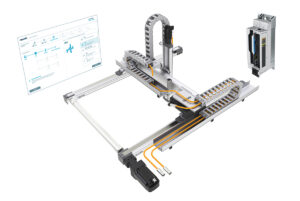
Plug-and-play systems like the Rexroth Smart Function Kit for Handling dramatically simplify how packaging OEMs can obtain and integrate Cartesian linear robots into a wide range of CPG lines. Image courtesy of Bosch Rexroth.
With app-based automation, many functions can be downloaded and added to the control system, tested and integrated into the machine or packaging line hardware much faster, with less risk of error and rework. This also makes it easier to add Internet of Things (IoT) functionality, such as wired or wireless remote sensors and high-speed video inspection tools, to existing platforms.
As a result, packaging operations gain increased flexibility to modify or upgrade their systems as markets and consumer trends change. It also can help streamline critical CPG production operations, helping improve uptime and productivity.
Machine changeovers are a perfect example: with these open, app-driven platforms, a high-speed cartoner can change over from a 12-ounce carton to a seven-ounce carton with a single command, with 80% to 90% of the servo controls, motors and other adjustments being fully automated. Every minute counts in the packaging industry, so more time saved equals more product out the door. It also means operators spend less time doing start-ups and more time enhancing peak efficiency.
Smarter, simpler mechatronics
Mechatronics systems play an integral role in many packaging line applications. Package sealing, carton forming and pick-and-place functions often utilize mechatronics that incorporate linear modules, servo drives, motors, controls and operator functions.
In the past, packaging OEMs would specify and order individual components (sometimes from different suppliers) and then engineer, physically integrate and program mechatronics such as linear robots on their own. That can be time-consuming and lead to delivery delays if the selected products aren’t available.
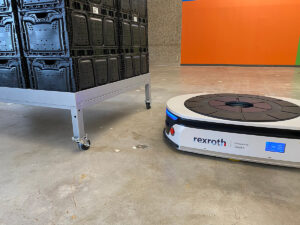
Autonomous mobile robots such as the Rexroth MP1000R offer a valuable tool to improve critical intralogistics functions — moving materials from warehouse to storage to production. Image courtesy of Bosch Rexroth.
There is a new generation of “plug-and-produce” smart mechatronics platforms that greatly simplify this task. They build on the latest advances in mechatronic controls, hardware and software to supply complete systems with all components integrated and software loaded and ready to use “out of the box.”
These systems dramatically simplify how packaging OEMs can obtain and integrate Cartesian linear robots into a wide range of CPG lines. They can feature intuitive, drag-and-drop programming tools that line operators can use to create pick-and-place sequences.
These mechatronics solutions can provide real-time tracking and recording of handling processes. Data can be easily shared with higher-level machine controls and databases that track process performance. This IoT-type technology supports in-depth analytics to help improve throughput, identify problematic packaging line functions and improve machine uptime — a smarter way for CPG manufacturers to keep costs down and productivity up.
Robotics moves forward
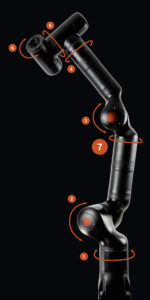
New cobots like Bosch Rexroth’s Kassow model feature seven-axis motion, sophisticated controls and sensors to make working with people extremely safe so CPG operations can redirect workers to more productive tasks. Image courtesy of Bosch Rexroth.
Plug-and-produce Cartesian systems aren’t the only tools enabling greater efficiency and versatility. There is a new generation of intralogistics robots and “cobots” playing an increasingly vital role in the CPG world.
New autonomous mobile robots (AMRs) offer a valuable tool to improve critical intralogistics functions — moving materials from warehouse to storage to production. These AMRs feature simplified programming, compact designs for tight turning spaces and versatile load capacities.
They provide an efficient and safe option for moving material from plant storage racks to the production line; this can be especially helpful in areas with labor shortages and to reduce maintenance costs associated with fork trucks and pallet jacks.
Cobots can also help keep packaging lines operating at peak efficiency. In certain CPG production settings, such as contract packaging, these robots can perform several different types of pick-and-place and palletizing applications. New models feature seven-axis motion, sophisticated controls and sensors to make working with people extremely safe, providing a way for CPG operations to redirect employees to more productive tasks.
Advantages of complete solutions portfolios
For many CPG manufacturers and machine builders, staying up to date with — and even ahead of — the latest automation and production technologies is critical to sustaining their competitive edge.
There are significant advantages to working with technology suppliers who offer a complete automation portfolio that encompasses — and fully integrates — controls, robotics, transport and mechatronics into productive, easy-to-implement solutions.
Companies like Bosch Rexroth have spent decades engineering and advancing the power and performance of their systems to help speed integration and eliminate bottlenecks in machine design and implementation.
Combined with a deep understanding of the unique challenges CPG manufacturers face, built on thousands of packaging machine applications, the right partner with the right technology can help ensure that your next packaging line solution delivers long-term value.
About the Author
Sean Spees is the Market Segment Manager for Consumer Packaged Goods at Bosch Rexroth Corporation, where he manages a team to provide complete automation solutions for end users, original equipment manufacturers and systems integrators. Learn more at www.boschrexroth-us.com/cpg-info.







